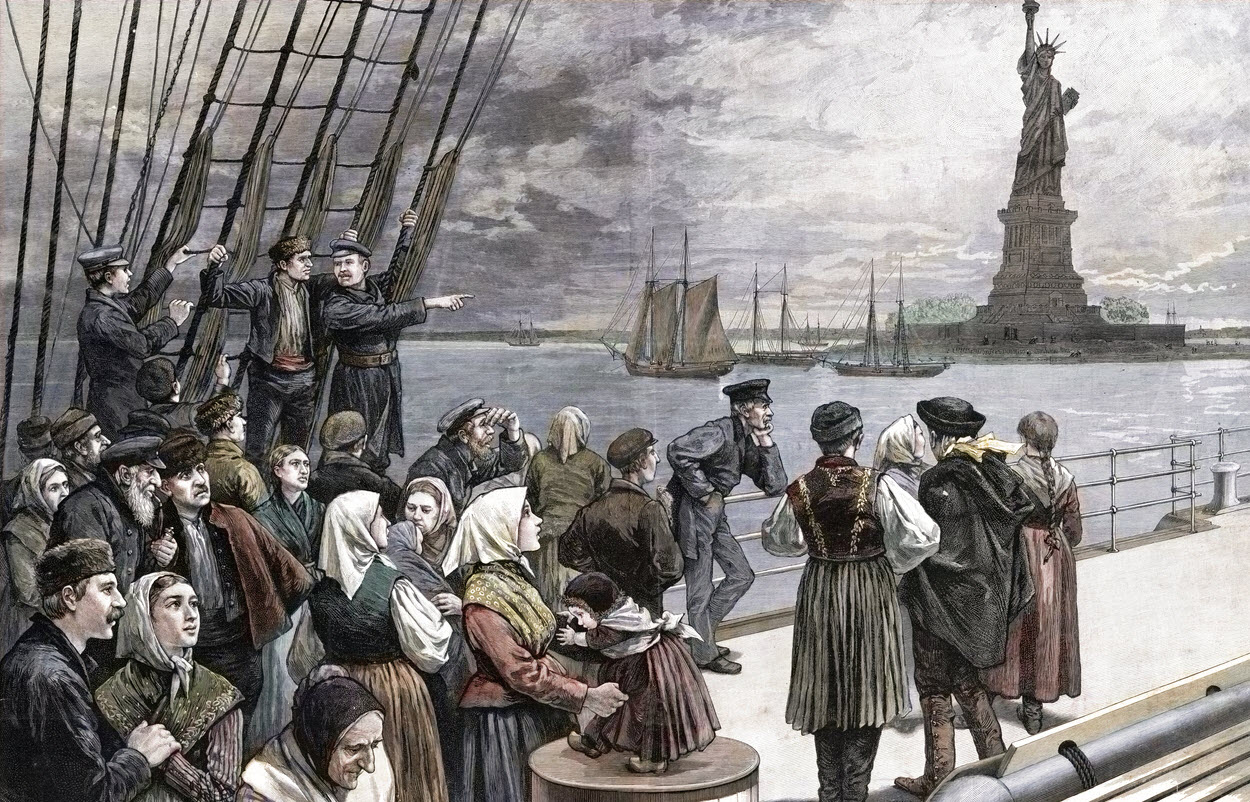| By Elizabeth Mohn |
Political leaders, media personalities, and everyday Americans often designate the United States as a “nation of immigrants” because of the country’s long history of immigration, which has resulted in a multicultural and multiethnic country. Because immigration to the United States is a broad topic, teachers can help students learn by encouraging them to focus on a specific immigration topic. The Gale In Context: High School Ellis Island portal is an excellent resource for teachers who want to both focus and extend students’ understanding of American immigration and the immigrant experience.
Teachers can introduce the topic by explaining that the immigration station on Ellis Island—which became famous for processing incoming immigrants—began receiving immigrants on January 1, 1892. Then they can guide students accessing the portal to begin their exploration of the topic by reviewing the Ellis Island overview, from which they will learn the island’s history—from being the home of the Mohegan people prior to European colonization to serving as a historical landmark starting in the late twentieth century. Students will also learn about the processes that immigrants entering Ellis Island had to undergo.
After students learn the basic facts about Ellis Island, they can explore the portal’s numerous resources to learn more about the immigration station, individuals who traveled through the station, and the island’s legacy. Teachers can encourage students to access the portal’s “Featured Content” section to understand more about the experiences that immigrants had while passing through the processing center. In the audio clip “Life of First Ellis Island Immigrant Revealed,” students can hear about Annie Moore, a teenager from Ireland who became the first immigrant to enter the processing station. They can also listen to this audio clip to learn about how some immigrants passing through Ellis Island had to complete a simple puzzle before being accepted into the country.
Teachers and students can also use the portal’s resources to make connections between immigration at Ellis Island and other aspects of the American immigrant experience. For example, teachers can encourage students to watch this video clip about the life and experiences of a twenty-first century immigrant to the United States. They could also guide students to access this data-driven comparison of modern and historical immigrants from the Washington Post. Together, teachers and students can identify the similarities and differences between the experiences of the twenty-first-century immigrants and the Ellis Island immigrants.
Teachers can continue the learning by sharing external resources or encouraging students to access them on their own. For example, teachers could have students read a review of the book The Last Days of Ellis Island, by Gaëlle Josse, to determine if they want to read Josse’s brief historical novel on the final days of immigrant processing on the island. They can also guide students to the Statue of Liberty-Ellis Island Foundation’s official website so they can learn more about the historical landmark and the thousands of people who passed through the island’s processing center to become part of a nation of immigrants.

About the Author
Elizabeth Mohn is a writer and an educational content developer. When she’s not reading or writing, Elizabeth is usually spending time with her family, listening to podcasts, or working in her garden.


